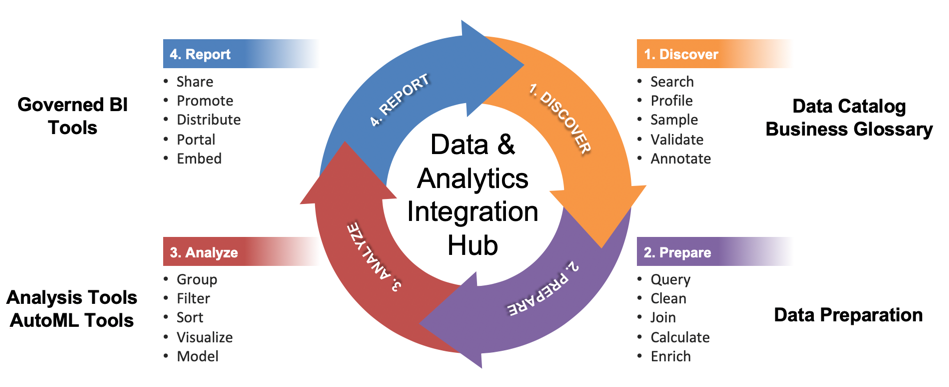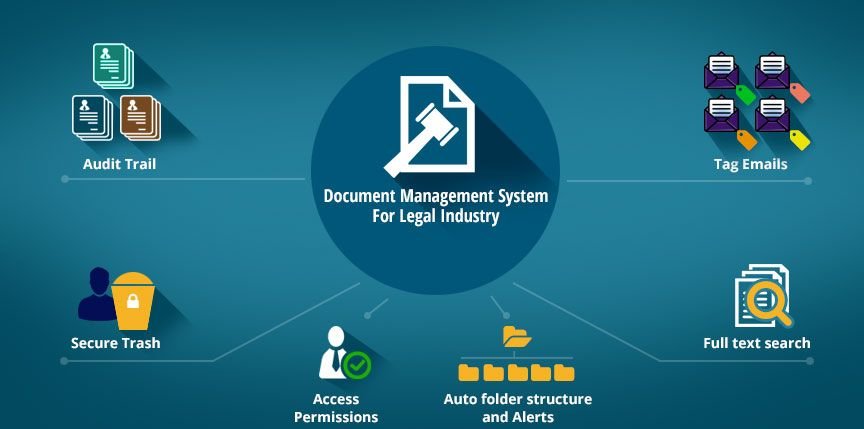How to integrate Case Law Analysis Tools into your workflow?

Introduction
Legal research is an important part of any legal practice, and the right tools can make the process much more efficient. In this article, we’ll discuss some tips and strategies for effectively integrating case law analysis tools into your legal workflow.
There are many different case law analysis tools available, and it can be difficult to know which one is right for you. The first step is to assess your needs and decide which features are most important to you.
Once you’ve selected a tool, it’s important to learn how to use it effectively. There are many tutorials and online resources available to help you get started. Be sure to take advantage of these resources and learn as much as you can about the tool’s features.
Finally, be sure to integrate the tool into your existing workflow. This will help you maximize productivity and get the most out of the tool.
Understanding the Basics of Case Law Analysis
Case law analysis is a fundamental aspect of legal research and holds immense importance in the legal profession. It involves analyzing and interpreting previously decided cases to understand legal principles, interpretations, and precedents relevant to a particular issue or area of law. By examining case law, legal professionals gain insights into how courts have applied legal principles to specific fact patterns, which guides their decision-making process.
Benefits of Case Law Analysis Tools
Case law analysis tools provide a wide range of benefits that can significantly enhance the legal research process. Here are some key advantages of integrating these tools into your workflow:
- Access to Comprehensive Databases: Case law analysis tools offer access to extensive and up-to-date legal databases. These databases contain a vast collection of court opinions, enabling legal professionals to find relevant precedents and research materials more efficiently.
- Time Saving: By utilizing case law analysis tools, legal professionals can save substantial amounts of time in their research. These tools use advanced algorithms and indexing systems to quickly analyze a large number of cases, providing instant search results and eliminating the need for manual searching through multiple sources.
- Enhanced Accuracy and Relevance: Case law analysis tools utilize advanced analytics technologies to identify and prioritize the most relevant cases based on various factors such as jurisdiction, date, and legal relevance. This helps streamline the research process by focusing on the most pertinent and reliable sources of law.
- Insights and Analytics: Many case law analysis tools provide additional features such as visualization tools, citation analysis, and trend identification. These functionalities allow legal professionals to gain valuable insights, identify patterns, and make more informed decisions based on comprehensive data analysis.
- Stay Up-to-date: Keeping up with new developments in case law is crucial for legal professionals. Case law analysis tools often offer automatic updates and alerts on new precedents, legislation, and court rulings, ensuring that you stay informed and can apply the latest legal knowledge to your cases.
- Cost Savings: By using case law analysis tools, law firms can potentially save on expenses related to accessing multiple legal resources or engaging external researchers. These tools offer a comprehensive and cost-effective solution to legal research needs.
Choosing the Right Case Law Analysis Tool
When it comes to integrating case law analysis tools into your legal workflow, selecting the right tool is crucial. Here are some key considerations to keep in mind during the evaluation process:
- Evaluating Case Law Analysis Tools:
- Look for tools that offer comprehensive coverage of legal databases and jurisdictions relevant to your practice area.
- Consider the user interface and ease of use. A tool that offers a user-friendly interface and intuitive navigation can significantly enhance your research efficiency.
- Check for advanced search capabilities, such as the ability to search by keywords, case citations, judges, and legal concepts.
- Evaluate the tool’s research assistance features, such as automated case summaries, citation suggestions, and related case recommendations.
- Consider whether the tool provides customizable alerts and notifications for new case developments and updates.
- Comparing Features of Different Tools:
- Make a list of important features you require in a case law analysis tool, such as intelligent search filters, document organization, and collaboration functionalities.
- Compare the pricing structures of different tools and assess whether they align with your budget and expected return on investment.
- Read reviews and testimonials from other legal professionals to gain insights into the strengths and weaknesses of each tool.
- Consider the tool’s integration capabilities with other legal software or platforms you currently use, such as document management systems or practice management software.
You May Also Like: How Corporate Law Departments Can Improve Client Relations Through Email
Comparing Features of Different Tools
When it comes to integrating case law analysis tools into your workflow, choosing the right tool is crucial. With numerous options available in the market, it’s important to compare the features and functionalities of different tools to find the one that suits your specific needs.
- User Interface: Consider the user interface of the tools and assess if it is user-friendly and intuitive. A clutter-free and well-organized interface can make your research process more efficient.
- Search Capabilities: Look for tools that provide advanced search capabilities, such as boolean search, filters, and citation search, to help you narrow down your results and find relevant case law quickly.
- Data Coverage: Check the data coverage of the tools. Ensure that they have extensive databases that include both primary and secondary sources, along with access to current and historical case law.
- Analytical Tools: Evaluate the analytical features offered by the tools. Look for tools that provide comprehensive legal analytics, including citation analysis, judge and attorney profiles, and precedent filters, to help you analyze cases more effectively.
- Collaboration Features: If you work in a team or collaborate with colleagues, consider tools that offer collaboration features like shared folders, comments, and document editing to streamline your teamwork and enhance productivity.
- Integration with Other Tools: Assess if the case law analysis tools integrate well with your existing workflow and other legal research platforms. Seamless integration can save you time and avoid the need for duplicate entries.
- Cost and Pricing Model: Compare the pricing models of different tools. Some tools offer monthly subscriptions, while others provide pay-per-use options. Consider your budget and choose a tool that delivers value for money.
Integrating Case Law Analysis Tools Into Your Workflow
When it comes to legal research and analysis, utilizing case law analysis tools can greatly enhance your productivity and efficiency. By seamlessly integrating these tools into your workflow, you can optimize your research process and stay on top of relevant legal developments. Here are some key strategies to effectively integrate case law analysis tools into your daily work routine.
- Automating the Research Process: One major advantage of using case law analysis tools is the ability to automate various aspects of your research. These tools can save you valuable time by quickly retrieving relevant cases, statutes, and regulations. Instead of manually searching through countless sources, you can rely on these tools to gather the necessary information efficiently.
- Optimizing Your Workflow with Research Tools: Case law analysis tools offer a range of features and functionalities to help you streamline your workflow. For instance, they may provide advanced search capabilities, allowing you to refine your queries and find highly relevant cases. Additionally, some tools offer case document organization features that let you save and categorize important cases for future reference.
- Analyzing Case Law in Context: While case law analysis tools offer valuable insights, it’s crucial to analyze case law within its broader legal context. These tools provide a wealth of information, but interpreting and applying that information requires legal expertise. Therefore, always ensure that you critically evaluate the relevance and authority of the cases found through these tools.
- Identifying Relevant Authority: In addition to analyzing case law, case law analysis tools can assist in identifying relevant legal authorities. These tools often provide citation analysis and linkage features, enabling you to trace the connections among cases, statutes, regulations, and secondary sources. By understanding the relationship between different legal authorities, you can bolster the strength of your legal argument.
Automating the Research Process
When it comes to integrating case law analysis tools into your workflow, automating the research process can be a game-changer. By leveraging technology and utilizing the advanced features and functionalities of these tools, you can save a significant amount of time and effort.
- Streamlining Search and Retrieval: Case law analysis tools offer powerful search capabilities, allowing you to retrieve relevant cases quickly and efficiently. With advanced filters and search operators, you can narrow down your search parameters and access the most relevant information within seconds.
- Automated Updates and Alerts: Stay up to date with new developments in your legal field by setting up automated updates and alerts within your case law analysis tool. These tools can notify you whenever there are new cases, court decisions, or legislative changes that may impact your research or ongoing cases.
- Citation Analysis: Case law analysis tools often include features that enable you to analyze the citations within a case. By examining how different cases reference and rely on each other, you can gain valuable insights into the strength of legal arguments and the evolving landscape of legal precedents.
- Cross-Case Analysis: Another valuable capability offered by case law analysis tools is the ability to perform cross-case analysis. These tools allow you to identify patterns, trends, and commonalities across multiple cases, enabling you to make stronger arguments, spot emerging legal issues, and develop persuasive strategies.
Analyzing Case Law in Context
To effectively utilize case law analysis tools in your legal workflow, it’s crucial to analyze case law in the proper context. Here are some strategies to help you make the most out of these tools and enhance your research process:
- Understand the Background: Before delving into specific cases, it’s important to grasp the broader legal concepts and principles related to your research. This will give you a solid foundation for analyzing case law accurately.
- Consider Precedents: When examining case law, it’s essential to identify precedents that have shaped the legal landscape. By understanding the historical context and the ruling’s impact on subsequent cases, you can gain valuable insights into how courts interpret the law.
- Look for Consistency: Analyzing case law in context involves identifying patterns and consistency among different decisions. This helps you establish the prevailing legal standards and anticipate potential outcomes in similar cases.
- Examine Jurisdictional Differences: Laws may vary across jurisdictions, and cases from different jurisdictions may have varying levels of relevance to your research. Consider the geographical and legal context of each case to determine its applicability to your specific situation.
- Utilize Annotations and Summaries: Many case law analysis tools provide annotations and summaries alongside the actual cases. These resources can provide valuable context, including commentary from legal experts, legislative history, and related secondary sources.
- Leverage Advanced Search Features: Take advantage of advanced search functionalities offered by case law analysis tools. These features allow you to search for specific phrases, narrow down results by jurisdiction or time frame, and filter by relevant keywords, thereby streamlining your research process.
Conclusion
Conclusion When you’re researching a case, it’s important to use a case law analysis tool to help you understand the law and to find relevant case law. There are a few different case law analysis tools available, and each one has its own advantages and disadvantages. The most important thing is to choose the right case law analysis tool for your specific needs. In this blog post, I’ll describe the different types of case law analysis tools, and I’ll provide tips for choosing the right one for your workflow. Stay tuned for more tips and strategies for integrating case law analysis tools into your workflow!
FAQs
How do case law analysis tools streamline the research process?
Case law analysis tools offer powerful search capabilities, allowing you to quickly retrieve relevant cases. With advanced filters and search operators, you can narrow down your search parameters and access the most relevant information within seconds. These tools also provide automated updates and alerts, keeping you up to date with new developments in your legal field.
How can citation analysis benefit my research?
Case law analysis tools enable you to analyze the citations within a case. By examining how different cases reference and rely on each other, you can gain valuable insights into the strength of legal arguments and the evolving landscape of legal precedents.
What is cross-case analysis, and how can it be helpful?
Cross-case analysis allows you to identify patterns, trends, and commonalities across multiple cases. This capability helps you make stronger arguments, spot emerging legal issues, and develop persuasive strategies.
What strategies should I consider when analyzing case law in context?
To effectively utilize case law analysis tools, consider strategies such as understanding the background of your research, identifying precedents that have shaped the legal landscape, looking for consistency among different decisions, examining jurisdictional differences, utilizing annotations and summaries provided by the tools, and leveraging advanced search features.
















































































































































































































































































































































































































































































































































